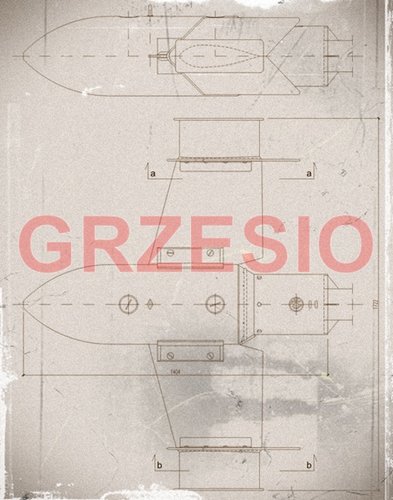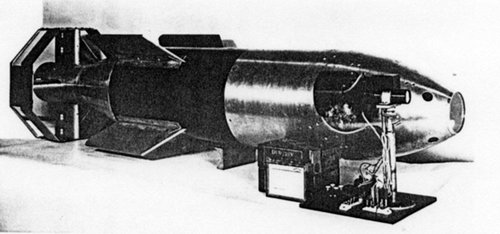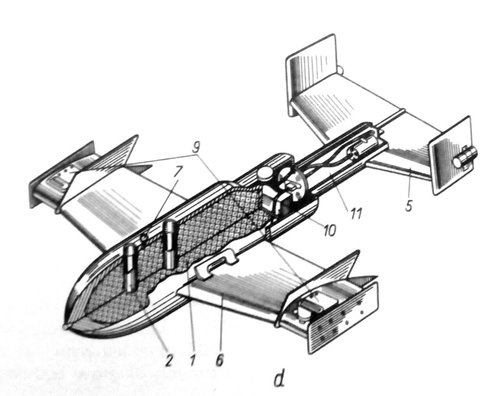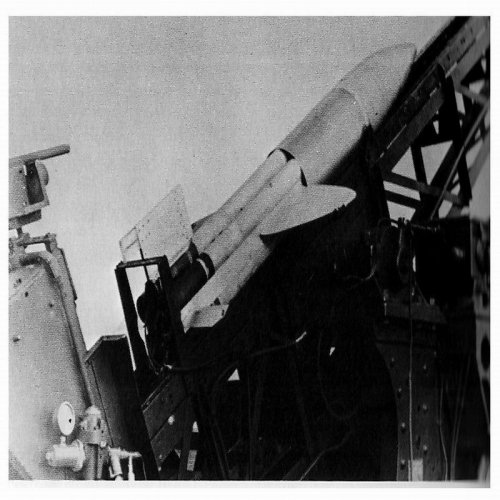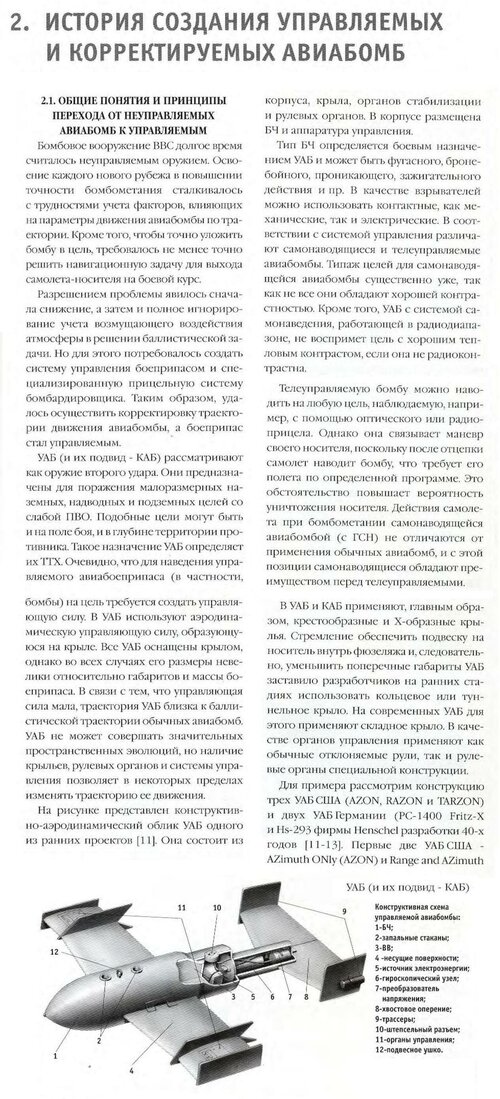Grzesio
ACCESS: Secret
Does anybody know such a German winged bomb - forward part of which is shown in the drawing?
The bomb is built around a SC 250 body equipped with fairly complex wings (comprising of flat plate inner sections plus relatively thick airfoil profile outer sections, separated by arrow shaped plates), a cylinder housing some equipment is mounted behind the warhead, apparently followed by a kind of a tail boom. Appearance of the tail of the bomb is not known.
The bomb is clearly guided as a multi-pin electrical socket is placed on top of the rear cylinder and a wire connects the cylinder with at least left wing - so probably the thick outer wing sections could house some kind of steering equipment, e.g. spoilers - precise details of the outer wing sections are sadly not known.
Wingspan is approx. 170 cm, length of the warhead with cylinder - 140 cm.
Any ideas?
The bomb is built around a SC 250 body equipped with fairly complex wings (comprising of flat plate inner sections plus relatively thick airfoil profile outer sections, separated by arrow shaped plates), a cylinder housing some equipment is mounted behind the warhead, apparently followed by a kind of a tail boom. Appearance of the tail of the bomb is not known.
The bomb is clearly guided as a multi-pin electrical socket is placed on top of the rear cylinder and a wire connects the cylinder with at least left wing - so probably the thick outer wing sections could house some kind of steering equipment, e.g. spoilers - precise details of the outer wing sections are sadly not known.
Wingspan is approx. 170 cm, length of the warhead with cylinder - 140 cm.
Any ideas?

